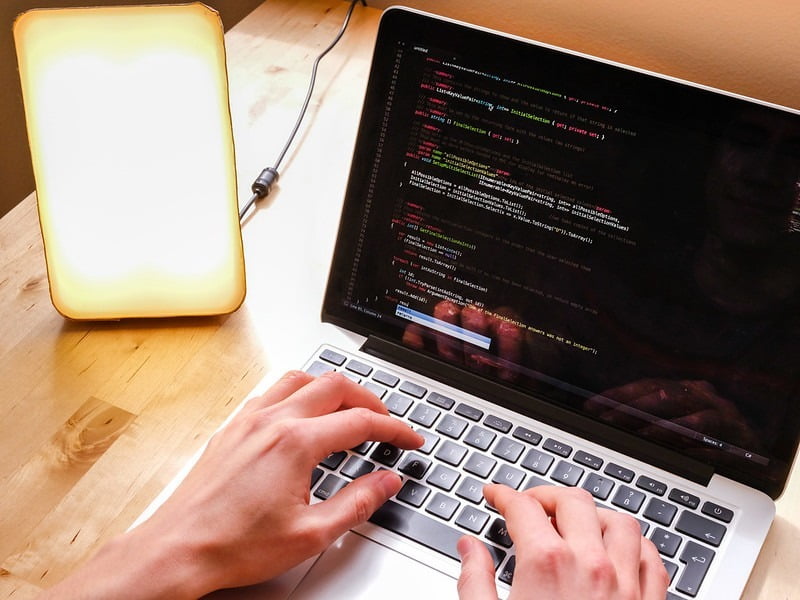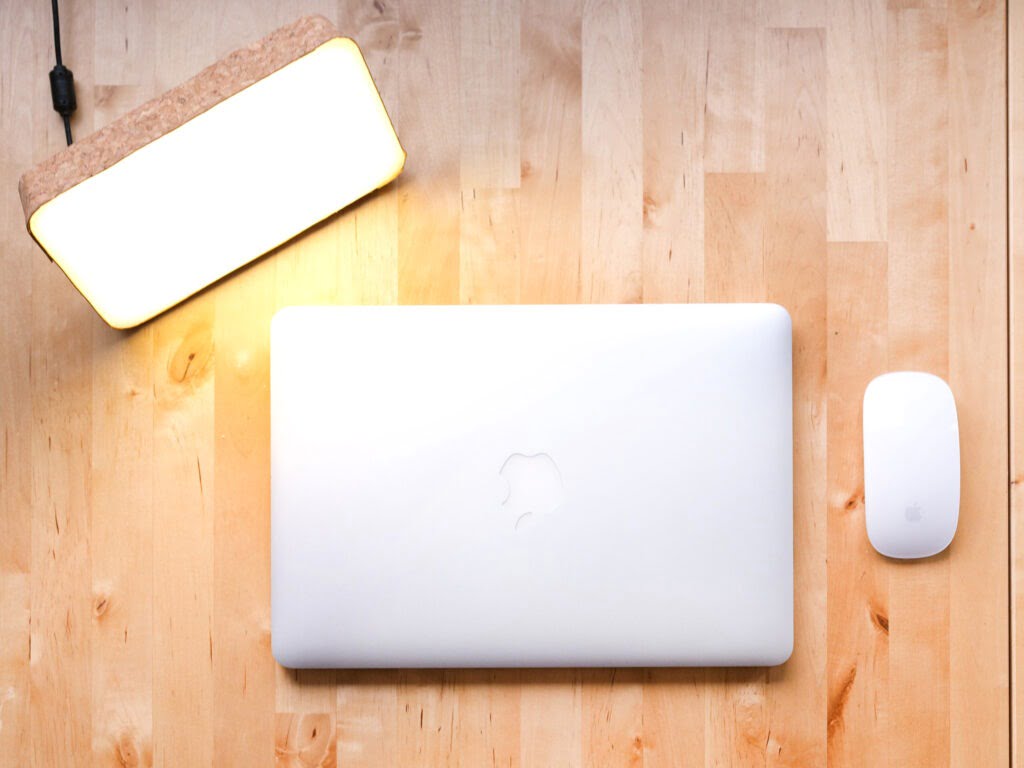Bright Light Therapy for Insomnia, Depression, and Jet Lag

If you struggle with insomnia, it may feel counterintuitive to consider light therapeutic; however, light is one of the most important cues used by your body to regulate your circadian rhythm. Bright light therapy for insomnia can be useful in helping you to get to sleep and feel better in the morning – and the best part? It’s completely natural, with minimal side effects. This article will explore what bright light therapy is and how you can utilize it effectively to get more restful and rejuvenating sleep.
What is bright light therapy?

You’ve likely heard of light therapy before. It goes by many other names, such as phototherapy or light exposure therapy. This type of therapy isn’t just useful in helping those who struggle with sleep disturbances. Light therapy can also address a wide variety of mood disorders and mental health concerns, such as depression and anxiety.
Exposure to full-spectrum light (like sunlight) helps maintain healthy levels of serotonin, a hormone that eventually converts to melatonin. Serotonin transmits signals between many different parts of the brain. And helps in many important areas of functioning, such as our mood, memory, appetite regulation, sexual desire, and energy.
With bright light therapy, you get the healing effects of the sun’s rays without the harmful effects of UV exposure. It is a safe and natural way to support your body’s natural circadian rhythm and can help correct a disrupted sleep cycle which is common for people who struggle with insomnia, depression, or jet lag. Getting enough bright light exposure is important, especially for people who are not getting enough daylight exposure.
You may be wondering: What is a circadian rhythm, and how does it affect my sleeping patterns?
How it helps with circadian rhythm regulation
Your circadian rhythm contributes to your body’s resting state of being and plays a large role in the regulation of key survival processes that you experience every day. Think about physical processes such as your hunger cues and your feeling of being awake vs. being sleepy.
According to the Sleep Foundation, light management is the top method that you can use to harness the power of your circadian rhythm and support your body’s natural sleep processes and entrain or anchor your circadian rhythm. Using bright light therapy for insomnia, jet lag, or depression is not just a single-use process. Multiple, routine usage has a much better track record of creating lasting, positive change in your sleep cycle.
What happens physiologically during bright light therapy?
During a bright light therapy session, your body experiences several physiological cues. By utilizing a phototherapy tool such as a lightbox, your brain receives signals to stop the flow of melatonin, which is known to promote sleep. After consistent use, you will begin to feel your body tire at night from the day’s activities and the heightened production of melatonin. This is why many professionals recommend using it in the morning to reduce morning grogginess, lift your mood, and keep you energized for the rest of your day.
Vitamin D production is also enhanced with exposure to light from phototherapy tools, which is why this method is also effective in addressing mood disorders. Vitamin D is known to promote cellular health and support your overall mental health.
Bright light therapy has been highly recommended for those with insomnia, with many recipients (a quoted 60-85% according to Carex) experiencing significant improvement over just two weeks. However, it is rarely a “cure” for chronic insomnia on its own, but effective as part of a comprehensive treatment such as Cognitive Behavioural Therapy for Insomnia.
How does bright light therapy for insomnia management work?
Throughout treatment, your healthcare professional will recommend that you purchase a light therapy or phototherapy box. These are relatively inexpensive compared to other related treatment methods.
Select a lightbox that provides at least 10000 lux of light exposure. Ideally, pick the largest-size lamp that fits your budget and space. A box with a larger surface area will provide more light and require less time sitting in front of the light.
After the box has been purchased, your practitioner will recommend a specific duration of your treatment and give you recommended times of the day. Most clinicians will recommend morning usage first, adding sessions and duration as you see improvements. This can be easily incorporated into your morning routine before work or school. Usage can range anywhere from 20 minutes to a full hour, depending on your care plan.
After treatment, you can resume your day as you normally would. Repeated use can support the process of retraining your body to an ideal routine sleep cycle (for example, 11 pm to 7 am). Along with other activities, such as a healthy diet, regular exercise and wind-down routine, light therapy can promote healthier sleep patterns.
How to use bright light therapy lamps correctly
For the best results from your bright light therapy lamp, start your sessions shortly after waking up and aim to use the lamp for 20 to 30 minutes each morning or as recommended by your healthcare professional. If possible, start your sessions at the same time each morning, such as between 6:00 AM and 9:00 AM. This consistency will help your body and internal clock make sleep and wake times more predictable.
Timing
When starting bright light therapy, begin with short sessions and gradually increase until you see an improvement. Most users with systems of seasonal depression start treatments in the early fall when the weather gets grayer and darker in the morning. Those with non-seasonal depression should continue treatment throughout the wear to maintain any improvements in mood and energy.
Positioning your bright light therapy lamp
For light therapy to be most effective, you must get the light positioning correct. Most product images on Amazon for bright light therapy lamps show incorrect positioning. Your eyes should ideally be positioned near the center of the light, with the lamp screen tilted, so it is projected over you during each session. If you have a model that does not tilt, use books or a laptop stand to prop it up and downwards towards your eyes.
You should consult the manufacturer’s guidelines for optimal distance from the lamp. This distance is usually between 16 to 24 inches from the screen. If this is too close to your face for comfort, you can sit further away with longer sessions.
How to position your bright light therapy lamp to get the most impact:
- Sit between 16″ and 24″ from the lamp (this will depend on the strength and model of your lamp)
- If you get eye strain, nausea, or migraine, you can sit further away for a longer period (e.g. 45 minutes instead of 30 minutes). These mild side effects typically subside after a few days.
- Ideally, the lamp screen should be tilted downwards towards you. Use a shelf or books to prop the device up if necessary.
Do not stare directly into the light; try working, reading, planning your day, eating breakfast, etc., during the session. The light should be getting straight to your eyes to be effective. To keep treatment effective, it is important to replace the device or bulb (if removable) if it starts to dim after two or more years. Newer models that use LED bulbs tend to have a much longer working life.
Keep track of your treatment sessions
Bright light therapy requires at least two weeks of treatment to see improvement. Ideally, you should stick to a consistent treatment plan for at least one month. Unfortunately, most people who’ve tried light therapy before didn’t use it long enough or correctly to gain any benefit. Keep in mind that it takes time for the body to adapt to the cues from the light.
If the symptoms do not improve after two weeks of consistent use, try increasing up to 60 minutes per day. You divide the session between the morning and early evening as well. Do not use the lightbox too late, as light exposure can disturb sleep.
The Center for Environmental Therapeutics recommends keeping a log of how you feel before and after sessions. Keeping track of your mood and energy levels will help you identify how effective your sessions are. The data you collection will also give you and your clinician an idea of whether you should increase session length and frequency.
Bright light therapy can help you to improve symptoms of insomnia, depression, and jet lag.
Sleep disturbances can seriously affect your quality of life. This information is not a substitute for medical consultation. Always check out information with your own physician and sleep specialist. At Quadra Wellness, we help you get the sleep you need to feel, think, and perform your best.
For more information on healing sleep disorders, you can visit our website at https://www.quadrawellness.com/, or call us for more information via our office line at 778-807-7373.
